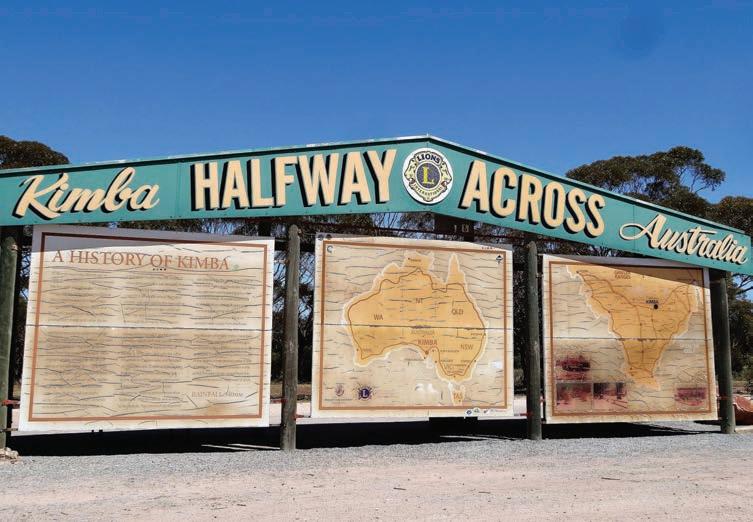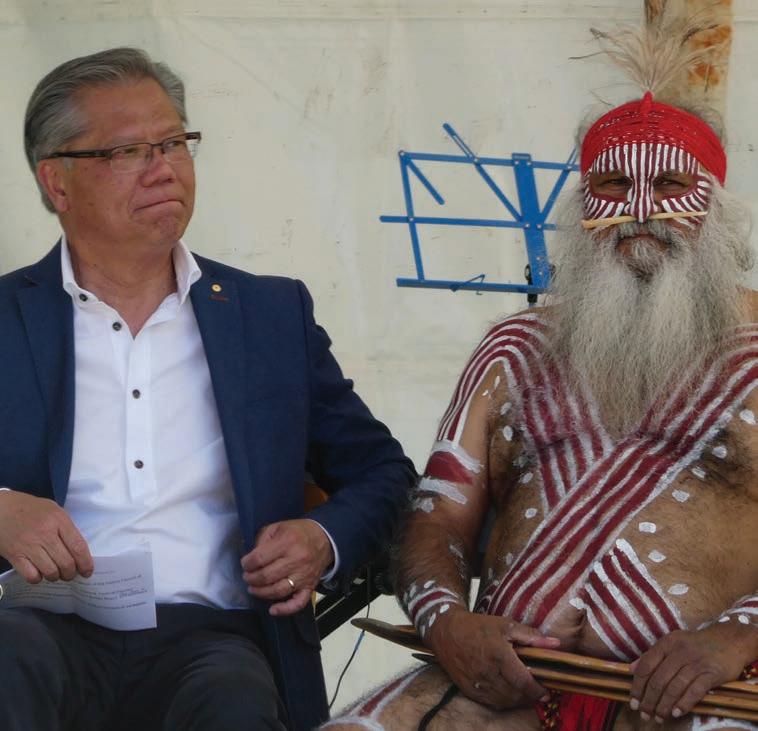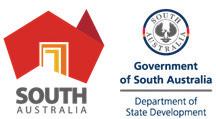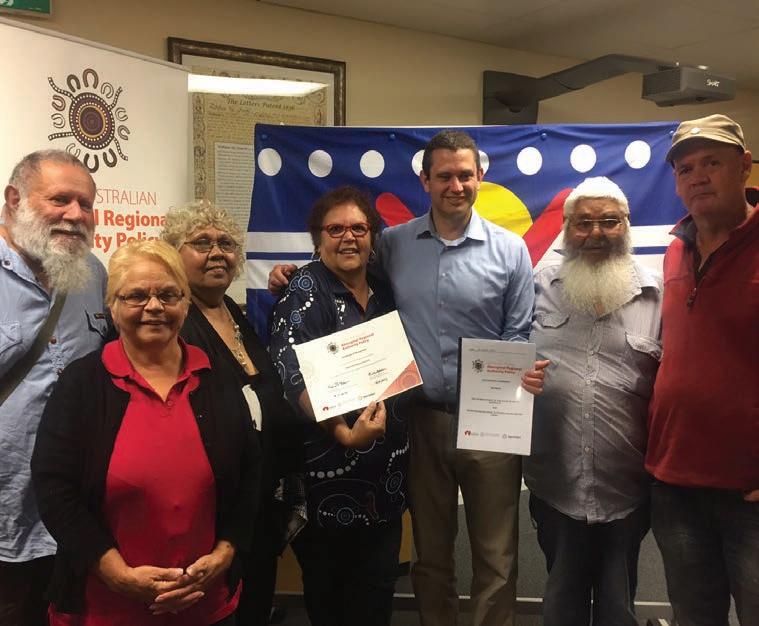
11 minute read
State and Federal nuclear update
Two proposals for nuclear waste storage in South Australia remain on the horizon, with the State Government’s proposal in retreat as the Federal Government’s plans pick up pace.
The State Government has recently moved its plans for nuclear waste storage to a ‘new phase’ of inactivity, while the Federal Government pushes for the identification of a final location for a national nuclear waste facility by the end of 2017.
Advertisement
Federal Government Proposal
After a nation-wide search, the Federal Government now has only two locations on its list for a nuclear waste facility, and both are in South Australia. The first is near Hawker, the second around the town of Kimba.
Six sites around Australia were originally shortlisted by the federal government to store low and intermediate-level waste.
Wallerberdina station near Barndioota and Hawker in the Flinders Ranges was the only site to reach a formal consultation phase, which remains ongoing. This was despite the Government reporting opposition from Indigenous stakeholders who were concerned at possible impacts on cultural heritage present at the site. There was also general opposition from a majority of the surrounding landowners who were concerned about impacts to local water supplies and perceived risks to agricultural reputation. the location for the centre, which will host radioactive waste currently held at sites around Australia.
It has stated that a final national site will only be selected if there is broad community support and it meets Australia’s strict environmental and radiation protection regulatory requirements.
The properties ‘Napandee’ and ‘Lyndhurst’ were then voluntarily nominated as possible homes for the waste dump late in the consultation process. A 90-day public consultation process will be held in the Kimba district after the nominations, with nearby residents set to vote in a postal ballot on whether a radioactive waste dump should be built in their district.
The Federal Government agency responsible for the proposal has established a shopfront in Kimba for community members to ask questions, obtain information and provide feedback about the proposed facility. The Federal Government wants to make a final decision by the end of the year on The Consultation and Response Agency (CARA), which delivered the engagement program on the nuclear proposal, and the CARA Advisory Board, which provided advice to CARA were closed by the Government on 31 March 2017.
The Government has reported that The Department of State Development will take responsibility for the new phase of the nuclear discussion. That phase “will focus on supporting a community-led discussion by maintaining access to resources and responding to community and stakeholder inquiries”. Following the release of the Community Views Report on the state nuclear proposal, which showed a majority of the state’s citizens were not in support of the waste site, the Premier announced a statewide referendum on the issue late last year. Mr Weatherill said at that time that no date was set for the referendum, it was unlikely to happen within at least the next decade. He also said the Government was unlikely to take significant steps to find a site or a nation willing to sell its waste to SA until a political consensus re-emerged. “Obviously we’d have no chance of success at the moment,” he said of the referendum. “There’s no point in promoting a referendum that has no chance of success.”
More information available at: http://www.radioactivewaste.gov.au/ State Government Proposal
The Weatherill Government has closed the two key bodies responsible for the debate over the desirability of a domestic and international nuclear waste storage site in the state, after admitting that there is no political consensus that would support the plan.
Further information on the state Government’s nuclear conversation available at: www.nuclear.sa.gov.au
All-inclusive launch of community Festival

At the official launch of the multi-award winning Festival Fleurieu, the SA Governor His Excellency the Honourable Hieu Van Le enjoyed a Welcome to Country by Kaurna Elder Uncle Lewis and a Welcome Dance led by Major Sumner and the Tal-Kin-Jeri Dance Group. His Excellency is pictured above with Major Sumner. For more photos from the Festival visit http://www.festivalfleurieu.com.au/2017/photo-gallery.htm
The Premier’s NAIDOC Award
Celebrating NAIDOC Week 2017
The Premier’s NAIDOC Award recognises the outstanding achievements and service of an extraordinary South Australian who has made a significant contribution to the lives of Aboriginal people in South Australia. Eligibility
Nominees must be: • a resident of South Australia • over the age of 18 years as at the 1st of January in the year in which they are nominated • a person who has made a significant contribution to the lives of Aboriginal people in
South Australia. Please note that persons cannot nominate themselves. Referees
Along with the nomination form, please provide the names and addresses of three referees who are in a position to comment on the nominee’s service. Nominations must be received by 5pm Wednesday 14 June 2017.
Please send your nomination marked ‘confidential’ to: The Premier’s NAIDOC Award C/– Jade Mathewson Aboriginal Affairs and Reconciliation Department of State Development GPO Box 320 ADELAIDE SA 5001 Or by email to jade.mathewson@sa.gov.au Nomination forms can be obtained from the Department of State Development website: http://www.statedevelopment.sa.gov.au/aboriginal-affairs For further information, you may telephone 08 8226 8900 during office hours.

Three Regional Authorities sign agreement with State Government
The State Government has signed Aboriginal Regional Authority Recognition Agreements with the Ngarrindjeri Regional Authority, the Adnyamathanha Traditional Lands Association (ATLA) and the Far West Coast Aboriginal Corporation.
The agreements were signed in March and April. They are a further step in the Government’s Regional Authority Policy, and follow the announcement last year that the government would recognise three organisations as South Australia’s first Aboriginal Regional Authorities. The third organisation to be recognised is the Far West Coast Aboriginal Corporation. On announcing the signing of the Agreements, the state government said that they mean the organisations are recognised as the lead regional decision makers. Minister Maher said that “our Aboriginal regional Authority Policy is a commitment to work more collaboratively with Aboriginal communities and to strengthen the relationship between the government and all Aboriginal South Australians”. Vincent Coulthard, CEO of ATLA said that the Regional Agreements cover the core parts of the relationship between his corporation and the government, and it is accompanied by a more detailed and flexible schedule.
“The Recognition Agreement just highlights some of the key points I mean like the preservation of culture, the economic sustainability for example. Then the schedule identifies how you go about delivering that,” he said. “We wanted a schedule that can vary from time to time as time goes on, we didn’t want to get locked into a fixed document that can’t be changed so through negotiations at the table with the government we can make some changes as needed,” he said.

Above: Narrindjeri Regional Authority Agreement signing, left to right, Victor Wilson, Lena Rigney, Sandra Wilson, Eunice Aston, Minister Kyam Maher, Marshall Carter and Malcolm Aston Snr.
Constitutional recognition must make Indigenous lives better. Otherwise what’s the point?
By Cheryl Axelby and Klynton Wanganeen
Last weekend the Referendum Council held its 10th regional dialogue to discuss constitutional recognition with Aboriginal and Torres Strait Islander people in Adelaide. We see this referendum as a once-in-a-generation opportunity to secure real and meaningful reform for our people. We want to make it happen.
This is a story that began long before the constitution was enacted. For South Australians, the imperial letters patent created a moral debt that is yet to be made good. Until that moral debt is redeemed, the soul of our country cannot be at ease.
The letters patent established the province of South Australia in 1836 and contained a serious condition: the fair treatment of the Aboriginal owners. The letters ‘Provided Always’ that “nothing… contained shall affect or be construed to affect the rights of any Aboriginal Natives of the said Province to the actual occupation or enjoyment in their own Persons or in the Persons of their Descendants of any Lands therein now actually occupied or enjoyed by such Natives”. This was the crown’s promise to always treat Aboriginal Australians with dignity, fairness and respect. It was not the first such royal promise. In 1787, King George III instructed Arthur Phillip “to endeavour, by every possible means, to open an intercourse with the natives, and to conciliate their affections, enjoining all our subjects to live in amity and kindness with them”.
The crown carried some honourable intentions in relation to our people. rates than we were at the time of the Aboriginal deaths in custody report. Too many children live in out of home care. Ice epidemics are rife. Constitutional recognition must improve the system, so that our people are more empowered to take charge to solve these problems. The government has the power to make laws for us, but in the current system we cannot easily take responsibility and leadership in these decisions. We want to make our own decisions about our lives. Too often governments talk about us, but they don’t talk to us. Consultation is poor. As only 3% of the population, our voices can’t easily get into parliament. Current Indigenous MPs must represent their political parties and their electorates. They do not represent an independent Aboriginal voice. Many delegates agreed that we need our rights enshrined and protected. We need them locked down in the constitution. Legislation is in one day and out the next. Native title amendments get rushed through without proper consultation. ATSIC was our peak legislated body, but it got struck down. Currently, we don’t have secure power to take responsibility and leadership – pursue self-determination – in our affairs. Many of us believe this power must come from the constitution, where it can be guaranteed. There was therefore strong support for a voice to parliament, through a properly representative, land-based body that is not hand-picked and that is guaranteed by the constitution, as well as support for agreement-making reforms through a truth and reconciliation process. There was strong interest among delegates
But those good intentions have largely not been realised. The way things played out, Aboriginal people were not treated with ‘amity and kindness’ and our rights were not respected as the letters patent required. Constitutional recognition must fix this. This reform must ensure that our people will be treated more fairly in the future. The moral debt must be lifted, so all Australians can move forward together with lighter hearts. We Aboriginal people of South Australia have survived, despite the injustices of the past. Our cultures and languages remain strong and must be cherished and shared. We remain connected to our land. Some of us lived through the stolen generations. But we all keep pushing and fighting for better lives. Our mob must be the most resilient people on the face of this planet. The delegates agreed that constitutional recognition must include substantive reform. We too reject minimalism, like our counterparts across the country. We all want a bit of blackness in this country’s white document – but not just for symbolic effect. We want this reform to make black lives better. Otherwise what’s the point? If we go for a weak option, we will never have another go in this lifetime. The minimalist ‘racism out, recognition in’ out model, or simply deleting the word ‘race’ from the constitution, would not address the legal challenges faced by Aboriginal people in South Australia. Aboriginal people are born with one foot in the grave. Some of us are told this when we are just 12 years old. We are currently worse off in our incarceration in a treaty or treaties, but a treaty was not viewed a silver bullet. It all depends on how legally effective it is. A treaty enacted in legislation can be changed or struck down. A statement of acknowledgement was also considered important, but only accompanied by substantive reform.
The importance of languages and cultures was emphasised in the discussion. The Aboriginal and Torres Strait Islander languages are Australian languages and should be recognised as such. This is the true heritage of our nation, and the inheritance of all Australians.
We in South Australia are ready to stand united and work together to achieve meaningful constitutional recognition for our people. We ask all Australians to hear our voices and join us on this journey. We ask government to listen too, and to work with us after the final gathering at Uluru. We do not wish to passively hand over our reform requests. We want to sit down and negotiate with all politicians.
This is about making good on past promises. It is about building a better and fairer Australia. It is about lifting the moral debt, so that our country can heal and grow stronger together. We can do it if we all work together, with good hearts and hard heads. It’s time for change. Let’s make it happen.




